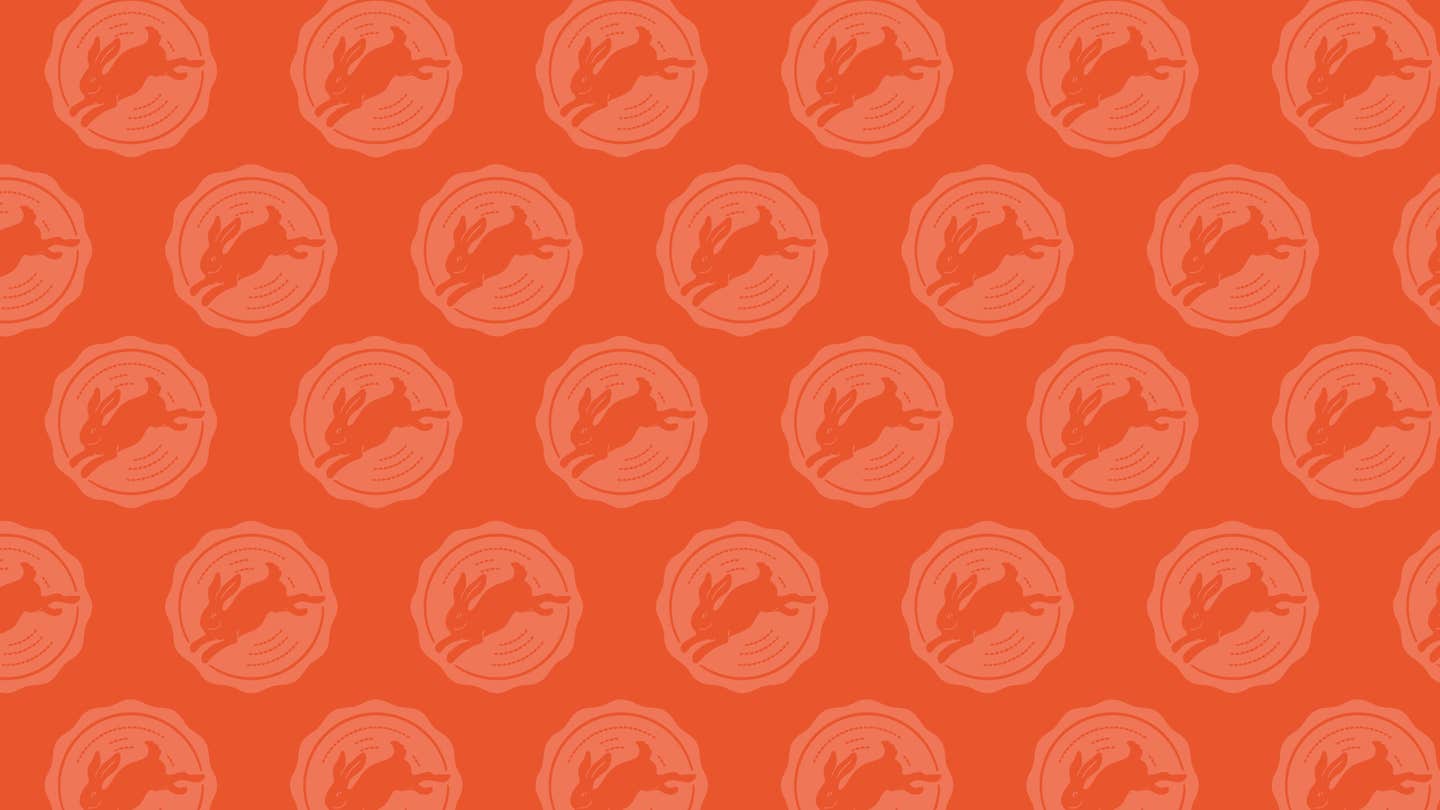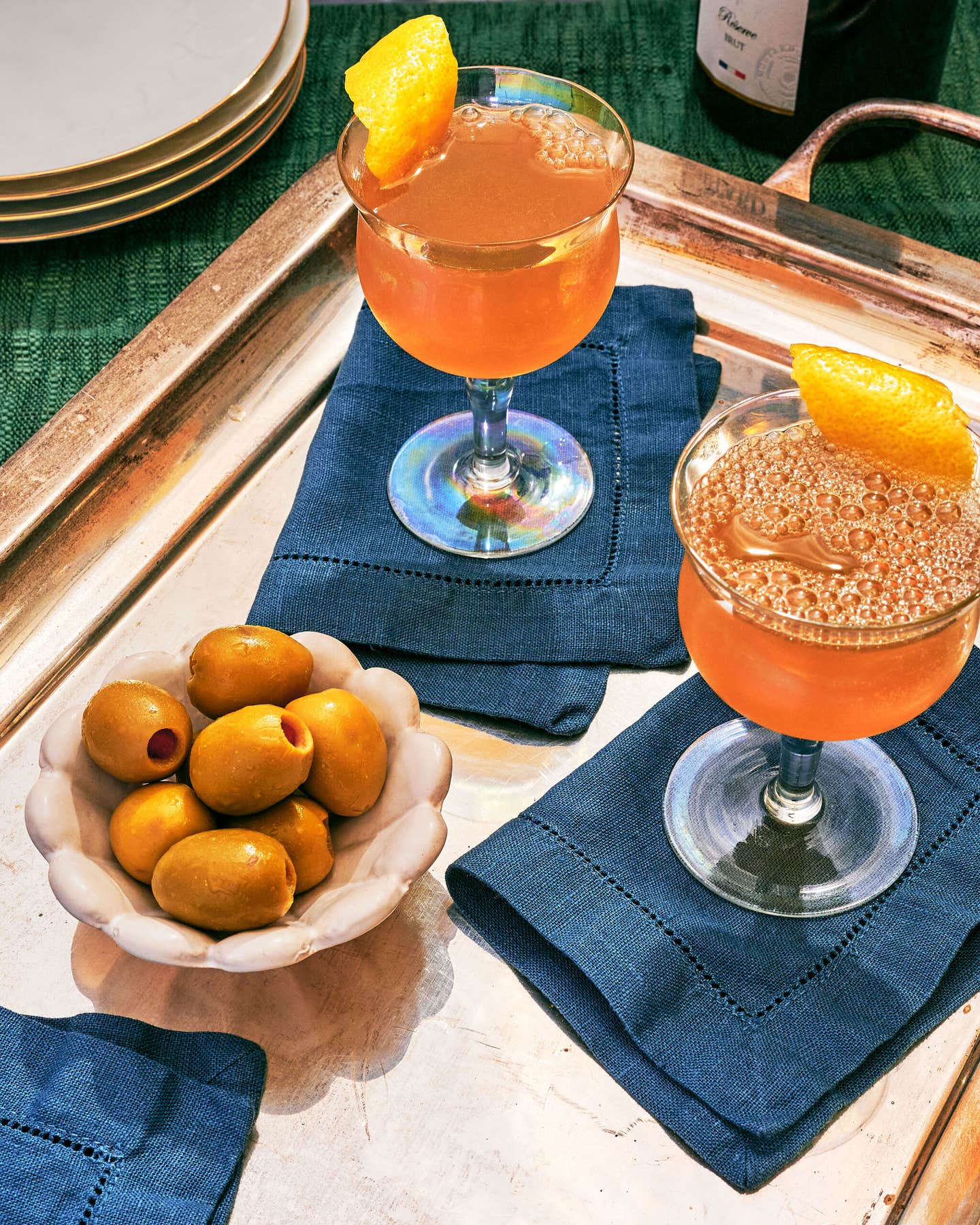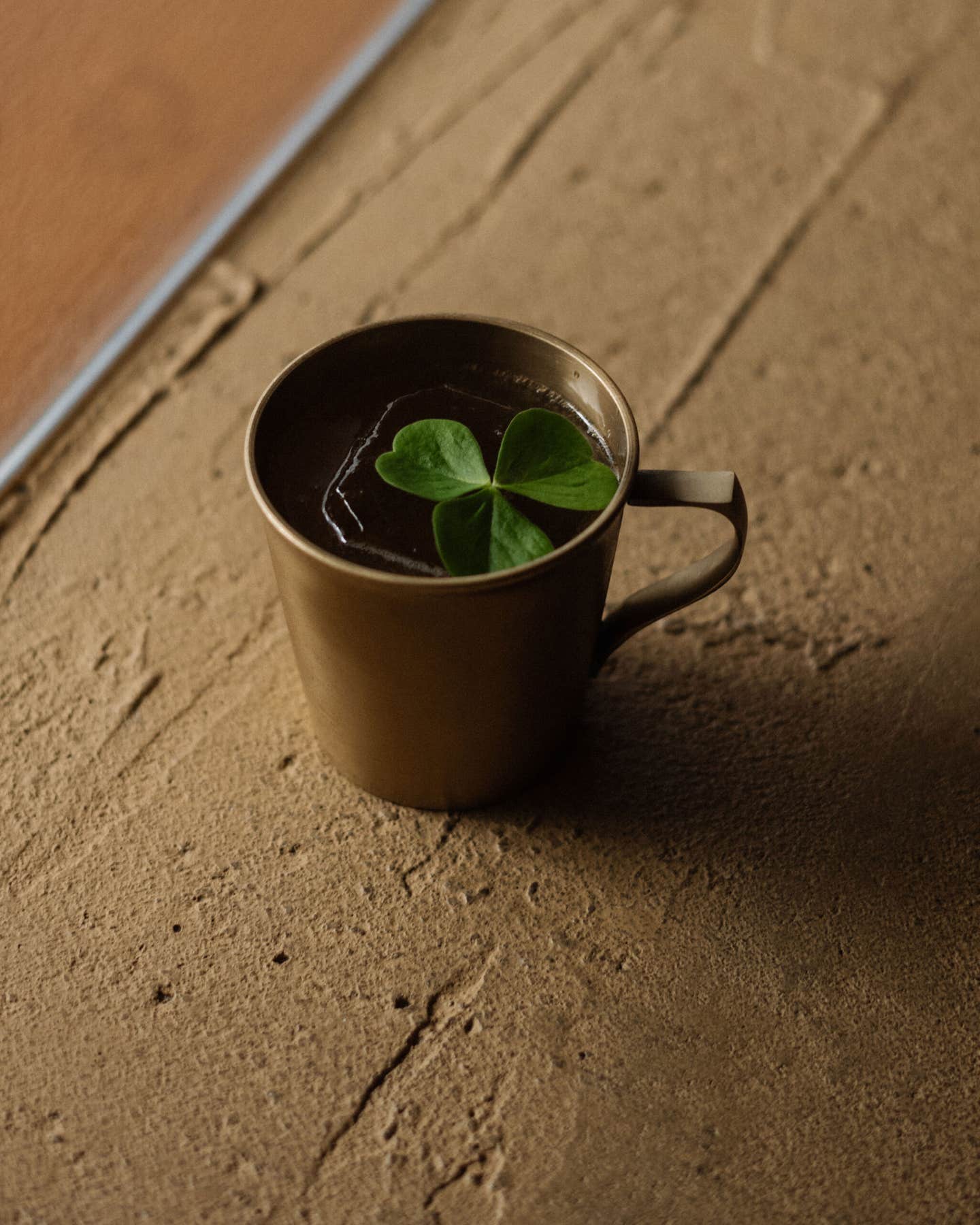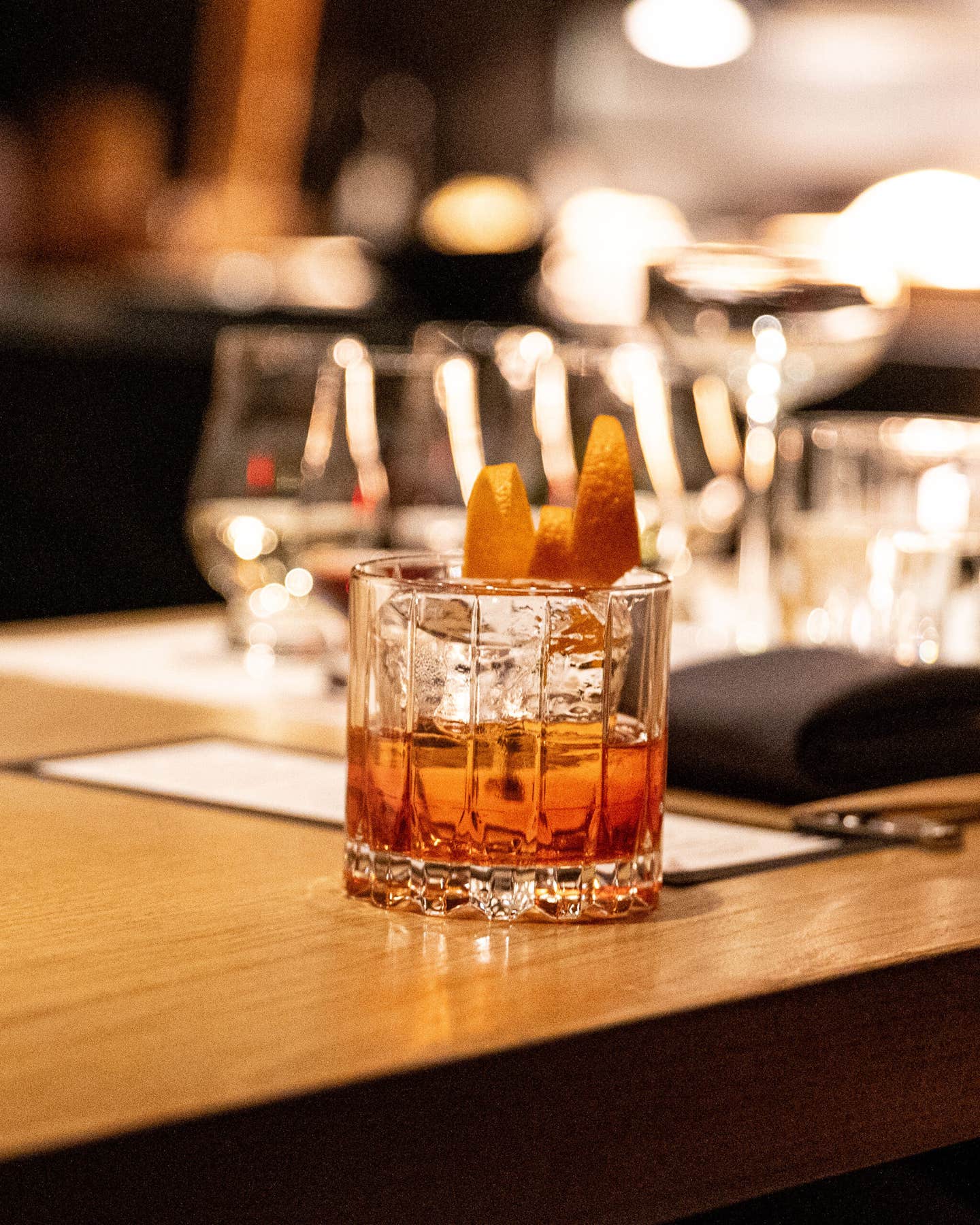
Blue Danube Whites
Why are we here? I ask myself as I try to separate my sticky, half-frozen fingers. My wife and I are standing in the Achleiten vineyard, high above the town of Weissenkirchen, and the Danube River, in Austria's Wachau region—but the normally spectacular view of the rocky valley below is lost in a sea of mist and cloud. The temperature is barely 40°F, and we're exhausted after eight hours of cutting shriveled berries out of bunches of grapes. A layer of syrupy grape juice coats our hands; we feel as if we've spent the day making jam inside an icebox. In fact, what we've been doing is selecting botrytized grapes for the first official riesling trockenbeerenauslese in the history of the Wachau.
"I thought you told me that it was always warm and dry here in autumn," my wife calls out. I probably did. It usually is sunny in the Wachau from spring through fall, which creates an ideal climate for the production of rich, dry white wines—the region's specialty for centuries. But our unanticipated suffering is the result of a call we had received several weeks earlier from a remarkable young vintner named Toni Bodenstein, winemaker at the Prager estate in Weissenkirchen—who asked if we would come and help him try to produce a revolutionary _sweet _wine in the Wachau. We couldn't resist the invitation.
Back at the winery, as Bodenstein inspects the results of our work with evident satisfaction, the local Mostwager—literally, "weigher of must" (grapes crushed for wine)—arrives. Since the Austrian wine scandal of 1985, when diethylene glycol—a sweet, oily, potentially toxic substance related to glycerol—was discovered in several wines sold by large commercial bottlers, Austria has introduced extremely stringent wine laws. One of these requires that a Mostwager inspect every batch of grapes harvested in the country before it's pressed, in order to verify the grapes' weight and sugar content.
Weissenkirchen's Mostwager, Walter Bauer, is a serious fellow, but when he sees the bins of grapes we have brought back from Achleiten, his eyes nearly pop out of his head. "What is that?" he demands. Toni explains. "But Herr Bodenstein," he replies, "look at these grapes. They are so shriveled there's no juice left in them! I can't stop you, but if you want my opinion, Herr Bodenstein, it's a complete waste of time." The next day, when the grapes are put into Bodenstein's small pneumatic press and it is brought up to full pressure, not a single drop of juice flows. "What did I tell you!" exclaims the Mostwager. But four hours later, his eyes nearly pop out of his head yet again when he sees a steady stream of thick syrupy juice finally emerging slowly from the press. We'd done it!
When I first visited the Wachau, in the fall of 1988, I was completely unprepared for the revelation that awaited me. Where else in the world, I was soon asking myself, is there a great wine region, boasting at least 1,500 years of tradition—the earliest vine terraces here date from a.d. 470—that is still waiting to be discovered by the world at large? I'll never forget standing in the dark, vaulted cellar of Franz Xavier Pichler in Oberloiben and shaking my head in disbelief at one astonishing dry riesling after another. I couldn't think of any German dry whites that could match them, and the number of Alsatian challengers was very small.
A new vineyard name was to etch itself in my mind as Pichler drew the last riesling sample we tasted—Kellerberg—from an ancient wooden barrel. Though it had only stopped fermenting weeks before, Pichler's 1988 vintage from this plot of land was an explosion of apricots and minerals on the palate. I was still catching my breath when "F. X.", as Pichler is known, began pouring another stunning series of wines. These were made from the gruner veltliner grape, an indigenous variety that accounts for 36 percent of the plantings in Austria's 140,000 acres of vineyards, and remains the most important grape variety in the Wachau—though it is likely to be overtaken by riesling in coming years. Also planted here are riesling-sylvaner (or muller-thurgau); weissburgunder (pinot blanc); feinburgunder—an Austrian synonym for chardonnay—and bits of gelber muskateller (muscat a petit grains), grauburgunder (pinot gris), neuburger, and some miscellaneous red-wine grapes. Most gruner veltliners are light, dry whites with crisp acidity and a peppery aroma. Pichler, however, makes monumental dry gruner veltliners that have all the power and richness of great white burgundies, but with a distinctive aroma of green plums, fresh herbs, and smoke. His 1995s, in particular, come as close to perfection as any wines I've encountered.
Many Americans already know the Wachau without realizing it, since this is where tourists inevitably choose to take a boat trip on "the Blue Danube". The river may actually be a greenish gray in color, due to the large quantity of silt in its waters, but a boat is definitely the place from which to best appreciate the special features of the landscape through which the river flows. This is the only part of the Danube's course, between its source in Germany's Black Forest and its confluence with the Black Sea, where it flows through a narrow valley. On precipitous hillsides with a southern exposure, the vineyards cling to terraces that climb 1,640 feet from the bank of the river up to the forests of the Waldviertel. The terraces are so narrow that only two or three rows of vines can be accommodated on each one, but they offer unrivaled exposure to the sun. This, and the warm winds from the Hungarian plain, help give the wines their body and ripeness, while cool air from the forests is responsible for their elegance and intense aromas. In addition, the gneiss, granite, and slate soil of the region accounts for the subtle mineral character of Wachau wines. However, the stoniness of the soil also means that the vines struggle to find enough water. Irrigation is therefore essential in hot summers if the vines are to remain viable.
With only 3,578 acres of vineyards, the Wachau is a very small wine-growing region by international standards. Officially, its borders extend from the Benedictine monastery of Stift Melk to its sister institution of Stift Gottweig, just south of the town of Krems, 20 miles downstream. The best vineyards lie within ten miles of one another on the left bank of the Danube. Their names—Singerriedel (Spitz), Achleiten and Klaus (Weissenkirchen), Kellerberg (Durnstein), Loibenberg and Steinertal (Loiben), and Schutt (Durnstein _and _Loiben)—are spoken with awe by Austrian wine fanatics.
The unique personality of each site can best be appreciated at the Freie Weingartner Wachau, the remarkable cooperative winery in Durnstein. When marketing expert Willi Klinger and winemaker Fritz Miesbauer took control of the operation in 1995, they extended its already wide range of single-vineyard wines. The rieslings they make from Achleiten's grapes, for example, are sleek and elegant, their peach and rose aromas intense but subtle. Their rieslings from Kellerberg are at the other end of the flavor spectrum—big, muscular wines with mango and white-chocolate flavors. The westernmost of the great vineyards, Singerriedel, gives dramatic, racy rieslings bursting with apricots, berry fruits, and minerals.
Buying more land in the Singerriedel in 1987 was a lucky decision," Franz Hirtzberger of Spitz, the rediscoverer of this vineyard—which had fallen into disuse—told me. "Nature gave us a wonderful wine in 1988. Since then we have had to allocate the wine. This interest makes all the work rebuilding stone walls and clearing the overgrown terraces worthwhile." Hirtzberger's rieslings and gruner veltliners are the ultimate in elegance—and the combination of his model wines, his sunny disposition, and his sharp intelligence make him an ideal president of Vinea Wachau, the regional winegrowers' association.
Since its foundation in 1983, Vinea Wachau's most important work has been the introduction of the unique designations under which the region's dry white wines are sold—Steinfeder, Federspiel, and Smaragd. It has also made endeavors to cultivate respect for the region's traditions among its vintners. For example, Vinea Wachau campaigns against the use of metal or concrete for the poles that support the rows of vines. As a result, wooden poles are still the norm in the region.
Wachau wines tend to show beautifully during the first year after bottling (which occurs in the spring following the harvest), then close up for a year or two. They should therefore either be consumed for their youthful freshness or laid down for at least three years. Dry Wachau rieslings and gruner veltliners at that age are at once lively and mellow, with a fascinating spice-and-mineral bouquet. I consider them one of the world's great wine experiences. If you want to taste Toni Bodenstein's Prager Riesling Trockenbeerenauslese 1993, however, you will need rather more patience. It needs another ten years to reach its peak.
Keep Reading
Continue to Next Story










